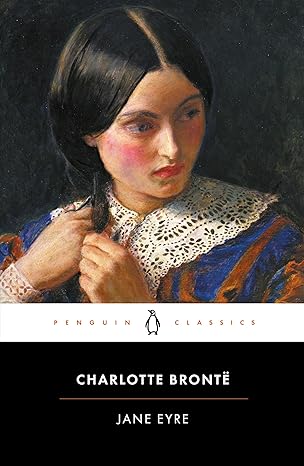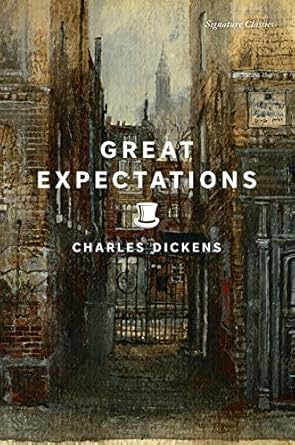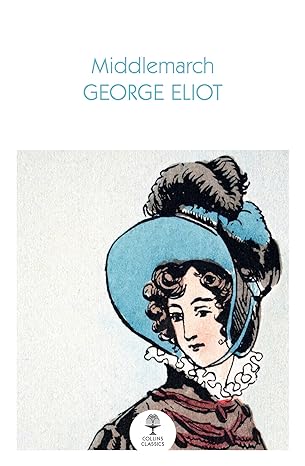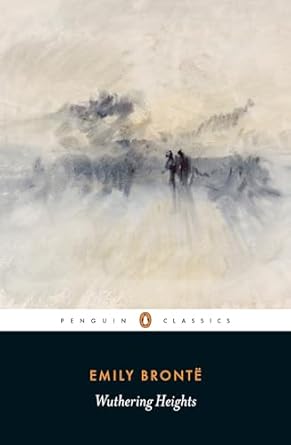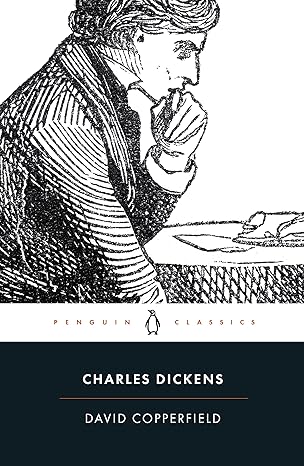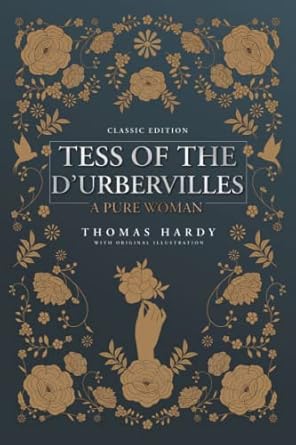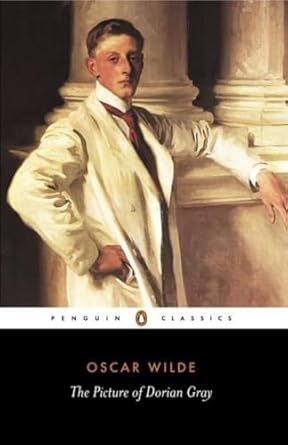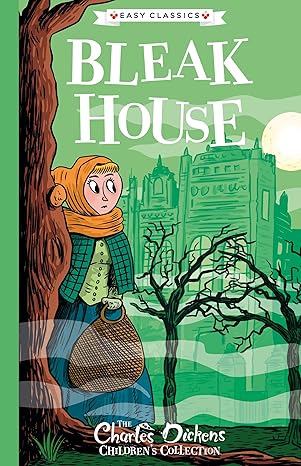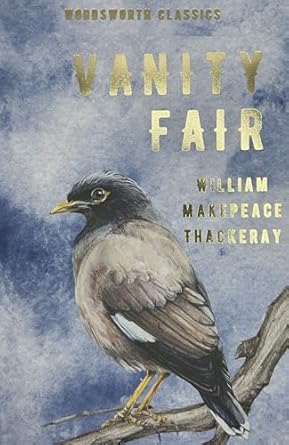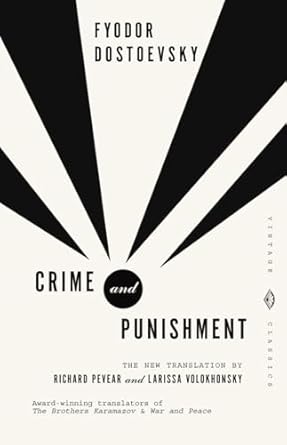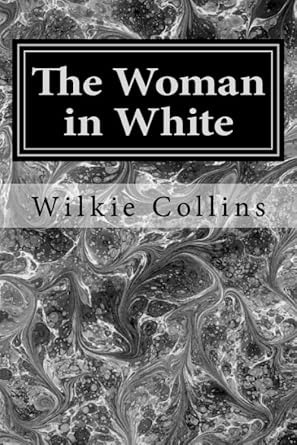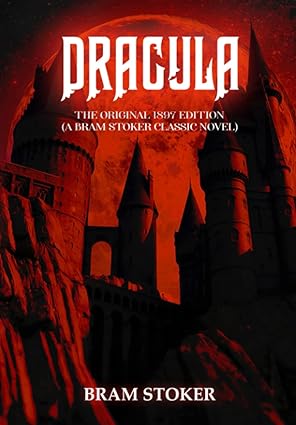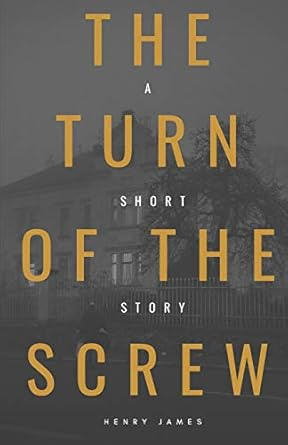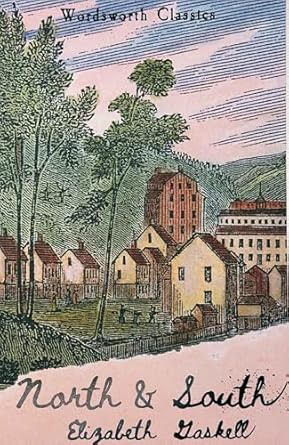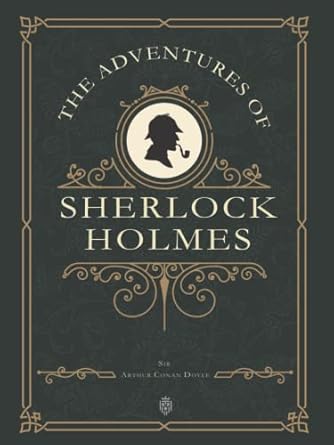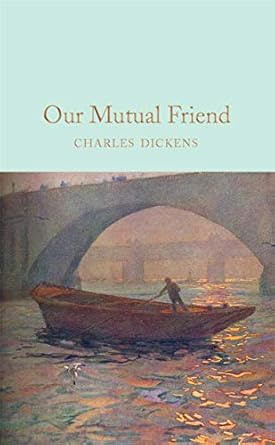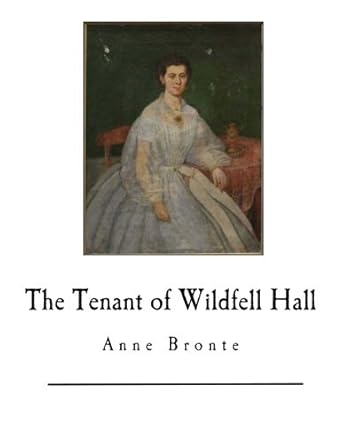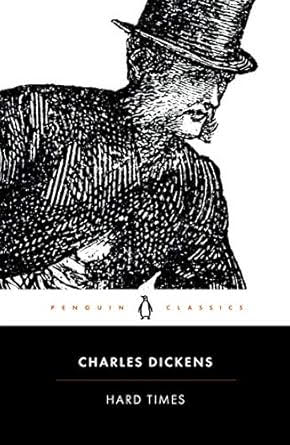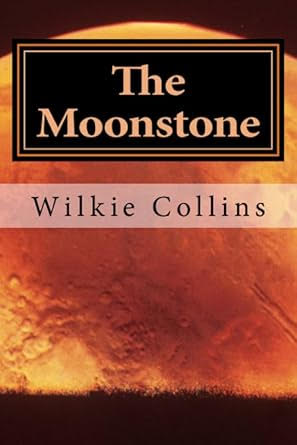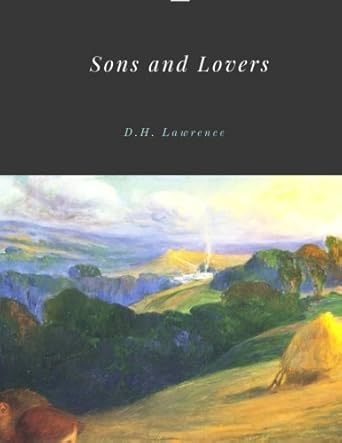Summary: In today's article, I have compiled 20 of the best Victorian novels, showcasing timeless classics that explore complex characters and societal themes. My top 3:
- Jane Eyre by Charlotte Brontë
- Great Expectations by Charles Dickens
- Middlemarch by George Eliot
Victorian novels offer a captivating look into 19th-century society, exploring themes like class, morality, gender, and industrialization. With complex characters, intricate plots, and sharp social commentary, these books reflect the era's struggles and shifts. They provide timeless insights into human nature, making them as relevant today as ever. Whether you enjoy romance, mystery, or social issues, Victorian novels have something for everyone and have shaped literature for generations.
TOP 20: Best Victorian Novels
- Jane Eyre by Charlotte Brontë
- Great Expectations by Charles Dickens
- Middlemarch by George Eliot
- Wuthering Heights by Emily Brontë
- David Copperfield by Charles Dickens
- Tess of the d'Urbervilles by Thomas Hardy
- The Picture of Dorian Gray by Oscar Wilde
- Bleak House by Charles Dickens
- Vanity Fair by William Makepeace Thackeray
- Crime and Punishment by Fyodor Dostoevsky
- The Woman in White by Wilkie Collins
- Dracula by Bram Stoker
- The Turn of the Screw by Henry James
- North and South by Elizabeth Gaskell
- The Adventures of Sherlock Holmes by Arthur Conan Doyle
- Our Mutual Friend by Charles Dickens
- The Tenant of Wildfell Hall by Anne Brontë
- Hard Times by Charles Dickens
- The Moonstone by Wilkie Collins
- Sons and Lovers by D.H. Lawrence
1. Jane Eyre
- Author: Charlotte Brontë
- About: A young orphan, Jane Eyre, becomes a governess at Thornfield Hall and falls in love with her mysterious employer, Mr. Rochester, uncovering his dark secrets.
- Style of writing: Gothic, first-person narrative, intense emotional depth.
- Length: Approx. 183,000 words.
- Year written: 1847.
- Emotional impact: Deeply emotional, explores themes of love, morality, and self-respect.
- Difficulty level: Medium.
- Why read it: A pioneering feminist novel with a strong, complex heroine and timeless themes of independence and love.
2. Great Expectations
- Author: Charles Dickens
- About: The life of Pip, an orphan raised by his sister and her husband, who unexpectedly comes into wealth through a mysterious benefactor.
- Style of writing: Rich, descriptive, and often satirical.
- Length: Approx. 183,000 words.
- Year written: 1860-1861.
- Emotional impact: Mixed emotions of hope, despair, and redemption.
- Difficulty level: Medium.
- Why read it: Offers an intricate exploration of ambition, love, guilt, and self-improvement, with memorable characters.
3. Middlemarch
- Author: George Eliot
- About: The novel revolves around the lives of several residents of the fictional town of Middlemarch, examining their personal and social struggles.
- Style of writing: Intellectual, social commentary, richly detailed.
- Length: Approx. 316,000 words.
- Year written: 1871-1872.
- Emotional impact: Thought-provoking, with a deep exploration of societal norms and personal growth.
- Difficulty level: High.
- Why read it: A deep and complex examination of human nature, morality, and social dynamics, considered one of the greatest novels in English literature.
4. Wuthering Heights
- Author: Emily Brontë
- About: A passionate and tumultuous love story between Heathcliff and Catherine Earnshaw, set on the bleak Yorkshire moors.
- Style of writing: Gothic, intense, poetic, and psychological.
- Length: Approx. 107,000 words.
- Year written: 1847.
- Emotional impact: Deeply unsettling, intense, with themes of obsession, revenge, and destructive love.
- Difficulty level: Medium.
- Why read it: A dark, passionate exploration of love, revenge, and the human psyche, ahead of its time in portraying the complexities of emotion.
5. David Copperfield
- Author: Charles Dickens
- About: The semi-autobiographical story of David Copperfield, following his struggles, triumphs, and personal growth from childhood to adulthood.
- Style of writing: Detailed, character-driven, humorous.
- Length: Approx. 358,000 words.
- Year written: 1849-1850.
- Emotional impact: A journey of hope and resilience, with both heartwarming and heartbreaking moments.
- Difficulty level: Medium.
- Why read it: A brilliant exploration of self-discovery, with a host of memorable characters, and Dickens' usual wit and social commentary.
6. Tess of the d'Urbervilles
- Author: Thomas Hardy
- About: Tess, a poor rural woman, suffers a series of personal and social misfortunes after being seduced by the wealthy Alec d'Urberville.
- Style of writing: Naturalistic, tragic, poetic.
- Length: Approx. 185,000 words.
- Year written: 1891.
- Emotional impact: Heart-wrenching and tragic, challenging societal views on morality and fate.
- Difficulty level: Medium.
- Why read it: A masterpiece of tragic realism, examining themes of social class, gender, and fate.
7. The Picture of Dorian Gray
- Author: Oscar Wilde
- About: Dorian Gray, a young man of extraordinary beauty, lives a life of indulgence while his portrait ages and reflects the consequences of his immoral actions.
- Style of writing: Witty, decadent, philosophical.
- Length: Approx. 78,000 words.
- Year written: 1890.
- Emotional impact: Thought-provoking, exploring vanity, corruption, and the consequences of a hedonistic lifestyle.
- Difficulty level: Medium.
- Why read it: A brilliant exploration of the dangers of vanity, excess, and the pursuit of pleasure at any cost.
8. Bleak House
- Author: Charles Dickens
- About: A complex narrative about the slow-moving court case of Jarndyce vs. Jarndyce, set against the backdrop of the London legal system.
- Style of writing: Satirical, with rich descriptions, a mix of humor and social critique.
- Length: Approx. 355,000 words.
- Year written: 1852-1853.
- Emotional impact: A mix of dark humor and sadness, highlighting the corruption and injustices in society.
- Difficulty level: High.
- Why read it: A critical look at the British legal system, social inequality, and Dickens' most intricate work, both in plot and character development.
9. Vanity Fair
- Author: William Makepeace Thackeray
- About: Follows the lives of two women, Becky Sharp and Amelia Sedley, navigating the social and political landscape of early 19th-century England.
- Style of writing: Satirical, humorous, with social commentary.
- Length: Approx. 370,000 words.
- Year written: 1847-1848.
- Emotional impact: Engaging, with a sharp critique of vanity, ambition, and social climbing.
- Difficulty level: Medium.
- Why read it: A biting social satire, offering a timeless commentary on ambition, love, and societal expectations.
10. Crime and Punishment
- Author: Fyodor Dostoevsky
- About: The psychological journey of Raskolnikov, a former student who believes he can justify murder for a greater good, but is tormented by guilt.
- Style of writing: Psychological, philosophical, introspective.
- Length: Approx. 211,000 words.
- Year written: 1866.
- Emotional impact: Deeply unsettling, with a focus on guilt, morality, and redemption.
- Difficulty level: High.
- Why read it: A profound exploration of moral dilemmas, guilt, and the human condition, one of the greatest works of psychological fiction.
11. The Woman in White
- Author: Wilkie Collins
- About: A suspenseful mystery about the eerie events surrounding the mysterious “woman in white,” which leads to a complex tale of crime, deception, and love.
- Style of writing: Gothic, suspenseful, with elements of mystery and detective fiction.
- Length: Approx. 195,000 words.
- Year written: 1859-1860.
- Emotional impact: Gripping, with an underlying sense of intrigue and fear, as well as themes of injustice.
- Difficulty level: Medium.
- Why read it: One of the earliest examples of detective fiction, full of twists and turns, and notable for its strong female characters.
12. Dracula
- Author: Bram Stoker
- About: The classic tale of Count Dracula's attempt to move from Transylvania to England to spread the undead curse, and the battle between Dracula and a group of people trying to stop him.
- Style of writing: Gothic horror, epistolary (written in letters, diaries, etc.).
- Length: Approx. 160,000 words.
- Year written: 1897.
- Emotional impact: Haunting, with a sense of dread and an exploration of fear, temptation, and the supernatural.
- Difficulty level: Medium.
- Why read it: The definitive vampire novel, full of suspense and chilling atmosphere, and a profound influence on modern horror fiction.
13. The Turn of the Screw
- Author: Henry James
- About: A governess is hired to look after two children in a remote estate, but she becomes convinced that the children are being haunted by the ghosts of former employees.
- Style of writing: Psychological horror, ambiguous, with a sense of tension and ambiguity.
- Length: Approx. 36,000 words.
- Year written: 1898.
- Emotional impact: Unsettling, with lingering unease and ambiguity that challenges the reader's interpretation of events.
- Difficulty level: Medium to high (due to ambiguity and psychological depth).
- Why read it: A masterwork of ambiguity and psychological horror that plays with the reader's perception of reality and madness.
14. North and South
- Author: Elizabeth Gaskell
- About: The story of Margaret Hale, who moves from the rural south of England to the industrial northern town of Milton, where she grapples with the industrial revolution, class struggles, and personal relationships.
- Style of writing: Social commentary, romantic, with strong character development.
- Length: Approx. 160,000 words.
- Year written: 1854-1855.
- Emotional impact: Evocative, with a focus on social change, love, and moral dilemmas.
- Difficulty level: Medium.
- Why read it: A rich portrayal of the social upheaval caused by the Industrial Revolution, with a compelling romance and strong social critique.
15. The Adventures of Sherlock Holmes
- Author: Arthur Conan Doyle
- About: A collection of short stories featuring the famous detective Sherlock Holmes and his companion, Dr. Watson, solving various mysteries and crimes.
- Style of writing: Detective fiction, logical, engaging, with sharp wit and reasoning.
- Length: Approx. 79,000 words.
- Year written: 1892.
- Emotional impact: Entertaining, intellectually stimulating, with a focus on problem-solving and keen observation.
- Difficulty level: Easy to medium.
- Why read it: The quintessential detective stories, with unforgettable characters, intriguing mysteries, and a sharp focus on logic and deduction.
16. Our Mutual Friend
- Author: Charles Dickens
- About: A complex tale of inheritance, social class, and the effects of wealth, as it follows the lives of several characters entangled in the mystery of a large fortune.
- Style of writing: Social critique, detailed, with dark humor.
- Length: Approx. 351,000 words.
- Year written: 1864-1865.
- Emotional impact: Thought-provoking, with a deep exploration of class, morality, and the human condition.
- Difficulty level: Medium to high.
- Why read it: A biting commentary on wealth, class, and corruption, with a strong, interwoven plot and vivid characters.
17. The Tenant of Wildfell Hall
- Author: Anne Brontë
- About: The story of a woman, Helen Graham, who escapes an abusive marriage and seeks refuge in a remote manor, revealing her past through letters.
- Style of writing: Gothic, realist, strong feminist themes.
- Length: Approx. 110,000 words.
- Year written: 1848.
- Emotional impact: Stirring and empowering, addressing issues of marriage, abuse, and female autonomy.
- Difficulty level: Medium.
- Why read it: One of the first novels to directly tackle the issue of domestic abuse, with strong feminist themes and a compelling, dramatic plot.
18. Hard Times
- Author: Charles Dickens
- About: Set in an industrial town, the novel critiques the harsh, utilitarian values of the time, following the lives of several characters whose personal struggles intersect with the demands of the system.
- Style of writing: Satirical, social critique, bleak and direct.
- Length: Approx. 80,000 words.
- Year written: 1854.
- Emotional impact: Critical, with a sense of moral urgency and reflection on the dehumanizing effects of industrialization.
- Difficulty level: Medium.
- Why read it: A sharp critique of Victorian society and its emphasis on utilitarianism, and an exploration of the consequences of a life devoid of imagination and empathy.
19. The Moonstone
- Author: Wilkie Collins
- About: A detective novel centered on the mysterious disappearance of a priceless diamond, with multiple perspectives and a complex web of suspects.
- Style of writing: Mystery, detective fiction, with Gothic undertones.
- Length: Approx. 160,000 words.
- Year written: 1868.
- Emotional impact: Engaging, with a growing sense of suspense and a clever narrative structure.
- Difficulty level: Medium.
- Why read it: One of the earliest detective novels, full of twists and suspense, and an important precursor to modern detective fiction.
20. Sons and Lovers
- Author: D.H. Lawrence
- About: A semi-autobiographical novel that explores the complex relationships between a young man, his overbearing mother, and his romantic entanglements.
- Style of writing: Psychological realism, emotional, and intense.
- Length: Approx. 118,000 words.
- Year written: 1913.
- Emotional impact: Deeply introspective and challenging, exploring themes of love, desire, and family.
- Difficulty level: High.
- Why read it: A powerful exploration of the Oedipal complex, emotional dependency, and the struggle for personal identity, with complex characters and psychological depth.
Conclusion
In conclusion, I think Victorian novels are as relevant and captivating today as they were when they were first written. Among them, Jane Eyre, Great Expectations, and Middlemarch stand out as essential reads. Each one offers a unique take on the complexities of 19th-century life, exploring themes like love, identity, social mobility, and personal growth. These classics not only showcase the literary brilliance of the Victorian era but also provide lasting insights into human nature, making them a must-read for anyone, like me, who is interested in exploring this pivotal period in literature.

